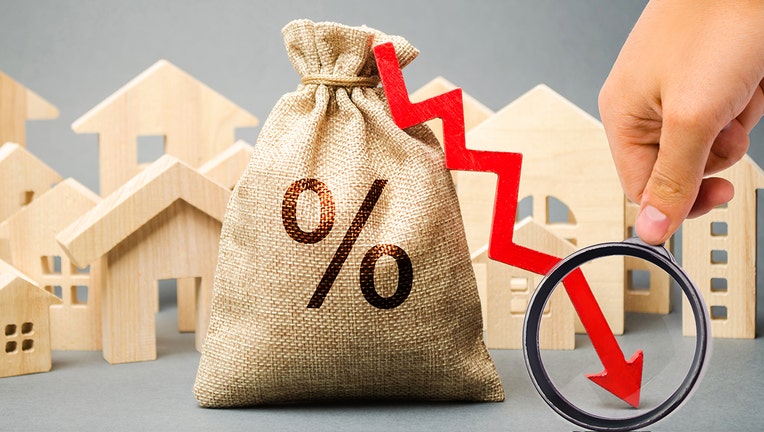Should you refinance your mortgage if you have a low rate?

With mortgage rates at historic lows, now is a great time to save money by refinancing. And it may make sense even if you already have a low rate on your mortgage. (iStock)
Mortgage rates have been at historic lows ever since the beginning of the coronavirus pandemic. At the beginning of 2020, 30-year mortgage rates were 3.72%, and 15-year mortgage rates were 3.16%.
In comparison, 30-year mortgage rates are currently 2.96%, and 15-year mortgage rates are 2.3%. These rates continue to fluctuate, and it’s unlikely refinance rates will stay this low as the economy continues to recover.
So if you want to take advantage of the current rates by refinancing to lower your monthly payments or pull out cash to pay down high interest credit card debt, now is the time to act. And a mortgage refinance may make sense even if you already have a low interest rate.
If you’re wondering how much you could save on your monthly payments by refinancing, visit Credible to get prequalified rates without having it negatively impact your credit score.
SHOULD I REFINANCE? HOW TO KNOW IF IT’S THE RIGHT TIME
When should you refinance your mortgage?
Many people start to think about a mortgage refinance once the rates fall below their current mortgage rate as they consider a lower payment or a home equity loan that could help pay down credit card debt or even personal loans or student loans. When you refinance your mortgage, you’ll reduce the interest rate and could save money over the life of the loan. But how do you know if refinancing your mortgage is the right option for you?
One of the biggest things to consider is how long you plan to stay in your home. Refinancing your existing mortgage only really makes sense if you plan to stay in your home for a while. That’s because after you pay for the closing costs, it can take several years to break even after refinancing and even longer than that to see any significant savings on your home loan.
Refinancing your mortgage also makes sense if you can lower your mortgage refinance rate or lower your monthly payment. If you’re interested in learning how much you could save by refinancing, this free online refinance calculator can help you determine your new monthly costs.
IS IT STILL A GOOD TIME TO REFINANCE MY MORTGAGE?
4 reasons to refinance a home loan if you have a low rate
In general, it makes the most sense to refinance if you can cut your current rate by one percentage point or more. Let’s look at three reasons why it could make sense to refinance your mortgage even if you already had a low rate including using your homes equity, low closing costs options, new loan terms and removing mortgage insurance from FHA loans:
- Cash-out refinance: When you do a cash-out refinance, you borrow more than what you currently owe on the loan. You can put your home's equity toward a home improvement project or paying down high-interest credit card debt.
- Minimal closing costs: When you refinance, you have to pay closing costs just like if you purchased a new home. Closing costs typically run between 2% and 5% of the total loan amount. But if you get a refinancing offer with low closing costs, then moving forward could make sense financially.
- Changing your loan terms: Refinancing also makes sense if you want to change your current loan terms. For instance, if you currently have a 30-year mortgage and want to switch to 15 years, refinancing makes sense.
- Removing mortgage insurance: For FHA loans, mortgage insurance is added on to the monthly payment for the life of the loan. Refinancing into a conventional loan could allow you to remove the mortgage insurance after you obtain at least 20% equity in the home.
To learn more about refinancing, visit Credible to talk with qualified loan officers who can answer your mortgage refinancing questions and help you figure out your next steps.
ARE YOU STILL CONSIDERING A MORTGAGE REFINANCE? WHY YOU SHOULD ACT NOW
Can I get a lower interest rate without refinancing?
If you’re looking to make changes to your current mortgage, refinancing isn’t your only option. You can also apply for a loan modification in order to lower your interest rate.
Unlike refinancing, a loan modification won’t pay off your current mortgage and replace it with a new one. Instead, it changes the loan terms and conditions of your existing mortgage. For that reason, a loan modification is only available through your current lender.
Most people apply for a loan modification if they want to lower their current interest rate or change their current loan terms. However, most lenders will only agree to this loan option if your mortgage is underwater or you are at risk of foreclosing.
For most people, refinancing is the best way to save money and earn a better rate on their mortgage. Visit Credible to view your loan options across multiple lenders with fewer forms to fill out.
Have a finance-related question, but don't know who to ask? Email The Credible Money Expert at moneyexpert@credible.com and your question might be answered by Credible in our Money Expert column.

